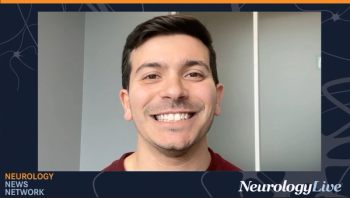
Understanding Parkinson’s Foundation’s New Community Education Series: Eli Pollard

The chief training and education officer at the Parkinson’s Foundation provided perspective on a recently launched online program aimed at educating healthcare professionals. [WATCH TIME: 3 minutes]
WATCH TIME: 3 minutes
"The Parkinson’s Foundation has prioritized educating healthcare professionals who may not be movement disorder specialists, but who do treat and see people with Parkinson [disease]. We know that there are a lot of healthcare professionals working at the community level."
For parkinson disease (PD), a neurodegenerative disorder that affects predominantly the dopamine-producing neurons in a specific area of the brain called substantia nigra, there are several signs that might predate its onset. These can include tremor, small handwriting, loss of smell, trouble sleeping, trouble moving or walking, constipation, a soft or low voice, masked face, dizziness, stooping or hunching over. Although more than 1 million people in the US are living with PD—with an additional 90,000 newly diagnosed annually—there are roughly only 600 movement disorder specialists.1
The lack of specialists is not uncommon, and highlights an overarching theme seen in neurology. In November 2022, the
To learn more about the program, NeurologyLive® sat down with Eli Pollard, chief training and education officer of the Parkinson’s Foundation. Pollard, who also serves as the executive director of the World Parkinson Coalition, provided perspective on the gaps in PD care, goals of the new series, and how it will work towards addressing the shortage of specialists.
REFERENCE
1. Willis AW, Roberts E, Beck JC, et al. Incidence of Parkinson disease in North America. npj Parkinsons Dis. 2022;8:170. doi:10.1038/s41531-022-00410-y
Newsletter
Keep your finger on the pulse of neurology—subscribe to NeurologyLive for expert interviews, new data, and breakthrough treatment updates.



































